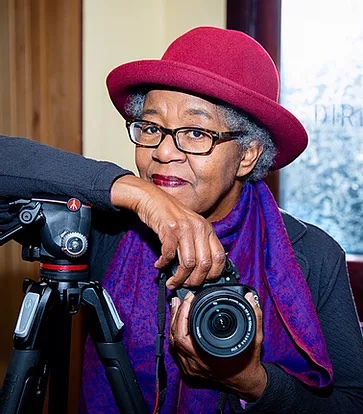
Paul Adams Photography
Sylvia Hamilton is an award-winning filmmaker, educator, historian, artist, writer, journalist, public speaker, poet, and activist from Nova Scotia. Hamilton is an Inglis Professor, and in addition to previously teaching in the School of Journalism at King’s, Hamilton co-founded a program with the National Film Board to provide women of colour and Indigenous women with opportunities to make films. Her films focus on the struggles and accomplishments of African Canadians and include the Gemini Award-winning Speak It! From the Heart of Black Nova Scotia and Black Mother Black Daughter, the first film from the Atlantic National Film Board studio crewed entirely by women. Her 2014 poetry collection And I Alone Escaped You was shortlisted for the League of Canadian Poets’ Gerald Lampert Memorial Award and the JM Abraham Poetry Award. Among her many accolades, Hamilton has received the Nova Scotia Portia White Prize, the CBC Television Pioneer Award, and a QEII Diamond Jubilee Medal. Finally, in 2019 she was the recipient of the Governor General’s History Award for Popular Media, the Pierre Berton Award.
On Wednesday, April 14, Hamilton gave a Zoom talk as part of the Counter Memory Activism Speaker Series. Hamilton began by describing her process and practice as an artist and historian, which are informed by her background, history, and experiences of the world. Her work often centers around objects of history which, she argues, based on their presentation, orientation, and context, offer a kind of “memory chamber” for remembering. Hamilton likened her role as a creator to Toni Morrison, who states that as a Black, woman writer she must tear away the “veil” obscuring difficult histories and “proceedings too terrible to relate.” Like Morrison, Hamilton engages her imagination to fill in gaps in the historical record where marginalized voices have been silenced, thus disrupting the “comfortable” narrative of Canada and challenging the past’s connection to the present.
Following her presentation, Dorota Glowacka, director of the Contemporary Studies program, facilitated a question-and-answer period through the Zoom chat and conversed with Hamilton about the significance of names, archaeology, history, and beauty to her work. For Hamilton, it is fundamental to find beauty even and especially in legacies of violence. Beauty through self-expression, love, laughter, or imagination, Hamilton explained, testify to our capacity to transcend victimhood and assert our agency despite horrific circumstances.
I found it especially moving to hear Hamilton speak about her ancestors: courageous, tenacious, and imaginative freedom fighters and refugees from the War of 1812 who were imprisoned on Melville Island. Hamilton asserts that her family survived because they were creative, determined, and capable of imagining a future where they would be free. Now, Hamilton observes, she can say, “I am who they imagined,” and carry on the realization of their dreams through education, art, and activism.
Katie Lawrence is a fourth-year European Studies student.

